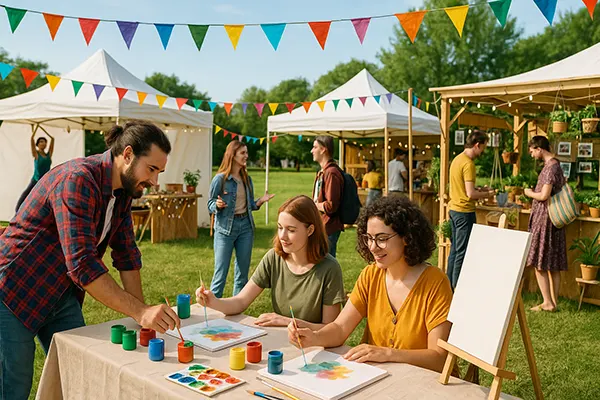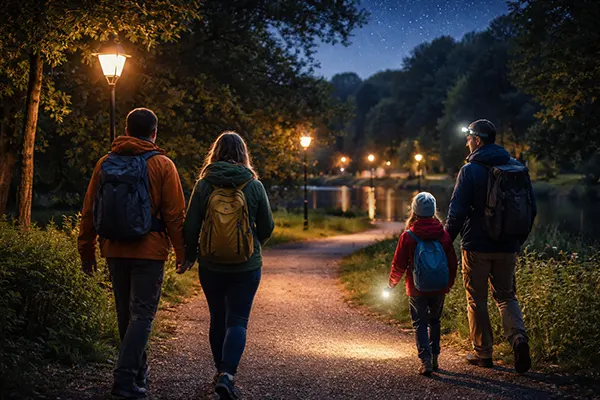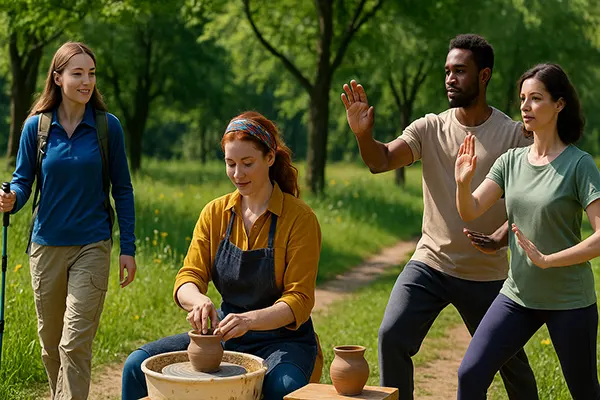How to Organise a Mini Hobby Festival: From Blog to Real-Life Gatherings
In recent years, hobby enthusiasts have been finding creative ways to connect beyond their screens. What begins as an online community — a blog, a social media group, or a dedicated audience — can evolve into a vibrant real-world event. A mini hobby festival offers the perfect opportunity to meet like-minded people, share skills, and inspire others. In 2025, with flexible venues, accessible event tech, and a growing demand for authentic experiences, organising such gatherings has never been more achievable.
Planning the Concept and Programme
The first step is to decide on the scale and purpose of your festival. Is it a casual meet-up for local followers, or a structured event with workshops, talks, and exhibitions? Define your audience — for example, photographers, yoga practitioners, or creative writers — and think about what activities would be most engaging for them. A well-balanced programme should combine interactive sessions, expert presentations, and networking opportunities.
Once you have your concept, draft a detailed schedule. Allocate time slots for each activity and ensure there are breaks for socialising. For a photography festival, you might include hands-on photo walks, editing workshops, and a mini exhibition of attendees’ work. For a yoga gathering, a mix of group classes, mindfulness sessions, and wellness talks could work well.
It’s also worth inviting guest speakers or workshop leaders with proven experience in the field. This not only adds credibility but also gives your attendees more value from the event. Offering both beginner-friendly and advanced sessions can make the festival accessible to a wider audience.
Securing the Venue and Logistics
Finding the right venue is crucial. In 2025, many co-working spaces, cultural centres, and community halls offer affordable short-term rentals. Consider the location’s accessibility, available facilities, and the number of participants you expect. Outdoor spaces can also be appealing, especially for activities like nature photography or open-air yoga, but always have a backup plan in case of poor weather.
When booking, check whether the venue provides essentials such as seating, sound equipment, projectors, or catering options. This can significantly reduce your organisational workload. Ensure there’s enough space for both active sessions and relaxed conversations — comfort is key to keeping attendees engaged throughout the day.
Don’t overlook practical elements like parking, public transport connections, and signage on the day. A smooth, well-planned experience will encourage participants to return for future events and spread the word about your festival.
Promoting Your Mini Festival
Promotion is the bridge between your idea and a successful turnout. Start early by announcing the event on your blog, mailing list, and social media channels. Use consistent branding, including a clear event name, logo, and theme colours. In 2025, short-form videos, live Q&A sessions, and behind-the-scenes updates are some of the most effective ways to generate interest.
Collaborating with other content creators or influencers in your hobby niche can help you reach new audiences. Offer them speaking slots, workshop opportunities, or free entry in exchange for promotion. Creating a hashtag for your event encourages attendees to share their own posts, which can help build momentum before, during, and after the festival.
Don’t forget local promotion. Community notice boards, hobby clubs, and local media outlets are still valuable channels. A combination of online buzz and offline presence increases your chances of attracting both your existing followers and newcomers who share the same passion.
Engaging the Community Before the Event
Building excitement and connection before the festival is essential. You could run online challenges or polls to let participants vote on topics they’d like to see covered. This makes the audience feel involved and ensures the event content meets their interests. For example, a photography group could vote on which locations to explore during a photo walk.
Offer early-bird discounts or exclusive extras, such as priority seating or printed event guides, to encourage early registrations. This helps you forecast numbers and manage your budget more effectively. Keep communication active with countdown posts, newsletters, and sneak peeks of guest speakers or activities.
By fostering interaction in advance, you set the stage for a warmer, more welcoming atmosphere on the day. Attendees who already feel part of the community are more likely to engage actively and form meaningful connections during the festival.

Delivering a Memorable Festival Experience
On the day, your role is to ensure everything runs smoothly while creating an environment that encourages participation and enjoyment. Greet attendees personally if possible, and make sure volunteers or team members are available to answer questions and guide people between activities.
Encourage interaction by incorporating networking breaks, open discussion panels, or collaborative projects. For example, at a craft-focused festival, you might host a communal art installation where everyone can contribute. Interactive elements make the event feel more personal and rewarding for attendees.
Collect feedback during and after the event. Simple surveys — whether paper-based or via a QR code — help you understand what worked well and what could be improved. Feedback is invaluable for refining future events and building a reputation as an organiser who values the community’s voice.
Maintaining Momentum After the Event
The end of the festival should be the beginning of an ongoing connection. Share highlights in the form of photo albums, short recap videos, or blog posts featuring participant stories. Tag attendees in social media posts to keep the engagement alive and make them feel appreciated.
Consider hosting smaller follow-up meet-ups or online discussions to maintain interest between larger gatherings. This continuity strengthens the community and makes it more likely that participants will return for future festivals.
By consistently delivering valuable, well-organised events, you can turn your hobby-focused blog or group into a recognised hub for real-world experiences, enriching both your own journey and that of your audience.





